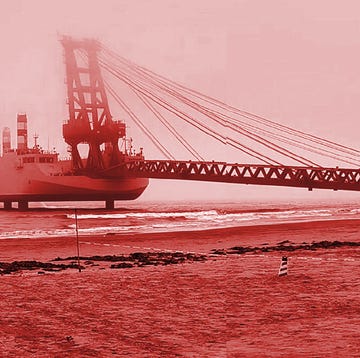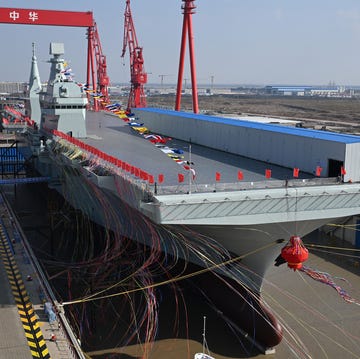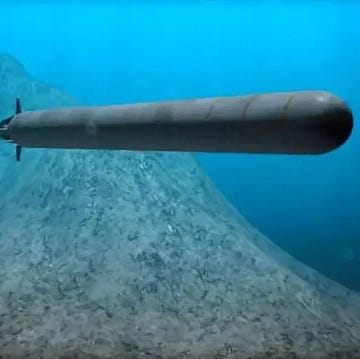- The U.S. Navy spends $3 billion a year fighting rust, according to Military.com.
- Corrosion takes place both on ships and shore, affecting cruisers, helicopters, and fighter jets.
- A deep fix of corrosion issues on just two ships cost the service $170 million alone.
The U.S. Navy was founded in 1775, and every day since has faced the same implacable enemy: iron oxide, or rust. For more than 200 years, this quiet war has caused untold billions—and there's no end in sight.
According to the Los Angeles Times, rust costs the U.S. Navy $3 billion billion a year, or at least it did in 2014. Spread over 293 ships that’s the equivalent of $10.2 million per ship. But some of the Navy’s ships are huge, with aircraft carriers displacing 100,000 tons while littoral combat ships (LCS) displace 3,900 tons. The tiny, aluminum-hulled LCS suffers from fewer corrosion issues.
The U.S. Navy faced considerable criticism this summer, both in the news and social media, over the condition of its ships. Many of the ships photographed appeared in poor condition, particularly next to allied ships. Longtime defense reporter Christopher Cavas wrote in July, commenting on the situation:
A service that once prided itself on looking sharp and being sharp has fallen by the wayside. For some years now normal exterior wear and tear on ships is left untouched or the haze gray is blighted by patchwork touchup jobs that sometimes render half a dozen shades of gray haphazardly close together. The dreaded “pinking” of paints introduced in the 1990s is being overcome, but ships don’t look any better unless they’re right out of the yard. Get too close to many US Navy ships and rust streaks abound.
Ships aren’t the only place where rust happens. Helicopters embarked on destroyers and cruisers frequently get sprayed with salt water, while aircraft on the flight decks of carriers might get salt fog or mist. There’s also the rust that happens at U.S. Navy facilities, both at the water’s edge and farther inland.
The Navy fights incidental rust at sea by scraping it off and then painting over it with Ameron PSX-700. Look up the price of Ameron PSX-700 and you get a feel for why fighting rust is so expensive: the paint costs $250 a gallon. More in-depth work is done at shipyards.
The war against rust is one war the Navy will never win—that is, unless it builds ships out of something other than steel.

Kyle Mizokami is a writer on defense and security issues and has been at Popular Mechanics since 2015. If it involves explosions or projectiles, he's generally in favor of it. Kyle’s articles have appeared at The Daily Beast, U.S. Naval Institute News, The Diplomat, Foreign Policy, Combat Aircraft Monthly, VICE News, and others. He lives in San Francisco.














